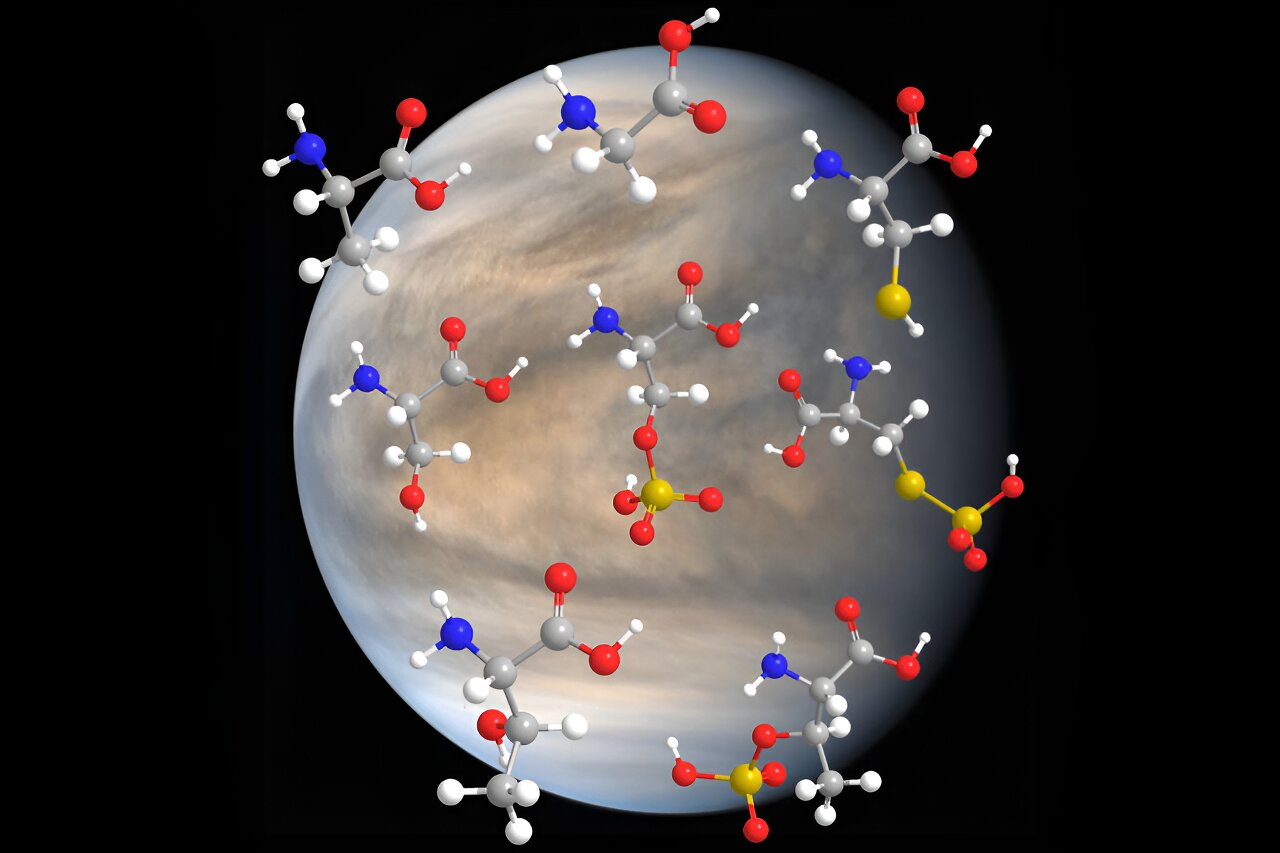The clouds of Venus are a relatively pleasant place on this hellish planet. However, even there the temperature is quite high, and they consist of sulfuric acid. However, scientists have found that the amino acids there remain stable and this preserves the hope of life.

Life in aggressive environments
If there is life outside the Earth in the Solar System, then it is worth looking for it in the clouds of Venus. Unlike the harsh and inhospitable surface of the planet, the atmospheric layer extending from 30 to 40 miles above the surface has milder conditions that can support the existence of some extremophilic organisms.
Scientists suggest that every inhabitant of the Venusian cloud, if it exists, will look very different from terrestrial life forms. This is because the clusters themselves consist of highly toxic droplets of sulfuric acid, an extremely caustic chemical that is known to dissolve metals and destroy most biological molecules on Earth.
But a new study conducted by scientists from the Massachusetts Institute of Technology may cast doubt on this assumption. A study published in the journal Astrobiology reports that, in fact, some key building blocks of life can be preserved in solutions of concentrated sulfuric acid. Its authors have found that at least 19 amino acids necessary for life on Earth remain stable for four weeks when they are placed in test tubes with sulfuric acid in a concentration similar to that found in the clouds of Venus. In particular, they found that the molecular “skeleton” of all these substances remained intact in solutions from 81 to 98 percent.
Amino acids in the clouds of Venus
The search for life in the clouds of Venus has been gaining momentum in recent years, partly due to the controversial discovery of phosphine in the planet’s atmosphere, a molecule that plays an important role in biochemical processes. Although this discovery remains a matter of debate, this news has once again raised an old question: Could complex organic molecules exist on Earth’s sister planet?
In search of an answer, scientists are planning several missions to Venus, including the first mission to the planet, funded mainly by private funds, with the support of the California company Rocket Lab. This mission, in which Seager (the author of the study) is the chief scientific officer, aims to send a spacecraft through the clouds of the planet to analyze their chemical composition for signs of organic molecules.
In fact, the team of scientists has previously shown that complex organic molecules, such as some fatty acids and nucleic acids, remain remarkably stable in sulfuric acid. Chemists carefully emphasize that “complex organic chemistry is of course not life, but there is no life without it.”
In other words, if certain molecules can be preserved in sulfuric acid, then perhaps the highly acidic clouds of Venus are habitable, if not necessarily inhabited.
Stable foundation
Scientists began their research on sulfuric acid during the pandemic, conducting experiments in a home laboratory. Since then, Seager and her son have continued to work on chemistry in concentrated sulfuric acid. At the beginning of 2023, they ordered powder samples of 20 “biogenic” amino acids — those amino acids that are necessary for all life on Earth. They dissolved each type of chemical compound in test tubes with sulfuric acid mixed with water at concentrations of 81 and 98 percent, which represent the range that exists in the clouds of Venus.
Then the team let the test tubes incubate for a day before transporting them to MIT’s Department of Chemistry Instrumentation Facility (DCIF), a joint laboratory that operates 24/7 and offers a range of automated and manual instruments for use by MIT scientists.
For their part, Seager and her team used a nuclear magnetic resonance (NMR) spectrometer to analyze the structure of amino acids in sulfuric acid. After analyzing each tube several times over the course of four weeks, the scientists were surprised to find that the basic molecular structure, 19 of the 20 amino acids, remained stable and unchanged even under conditions of high acidity.
According to phys.org
Follow us on Twitter to get the most interesting space news in time
https://twitter.comne/ust_magazine


